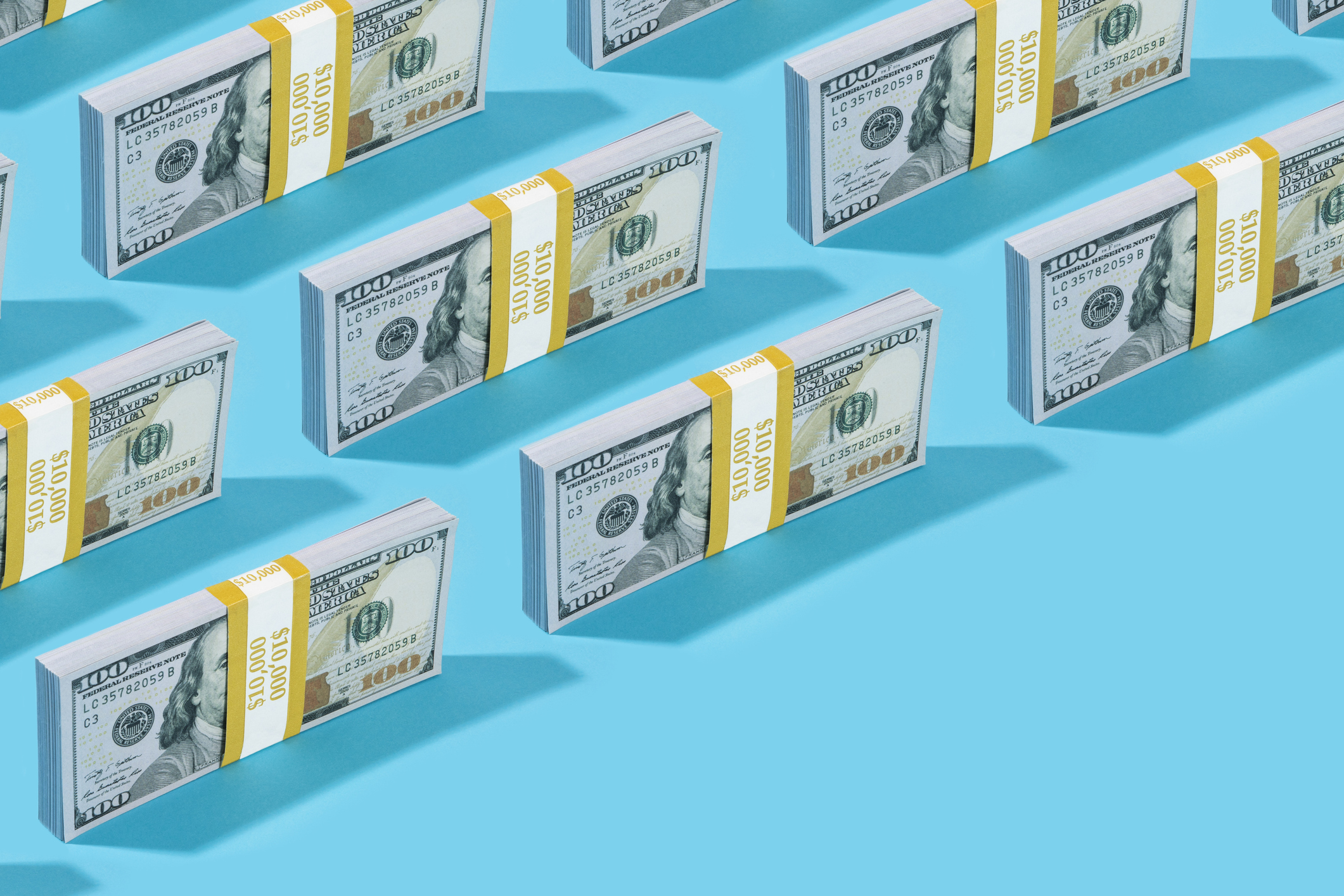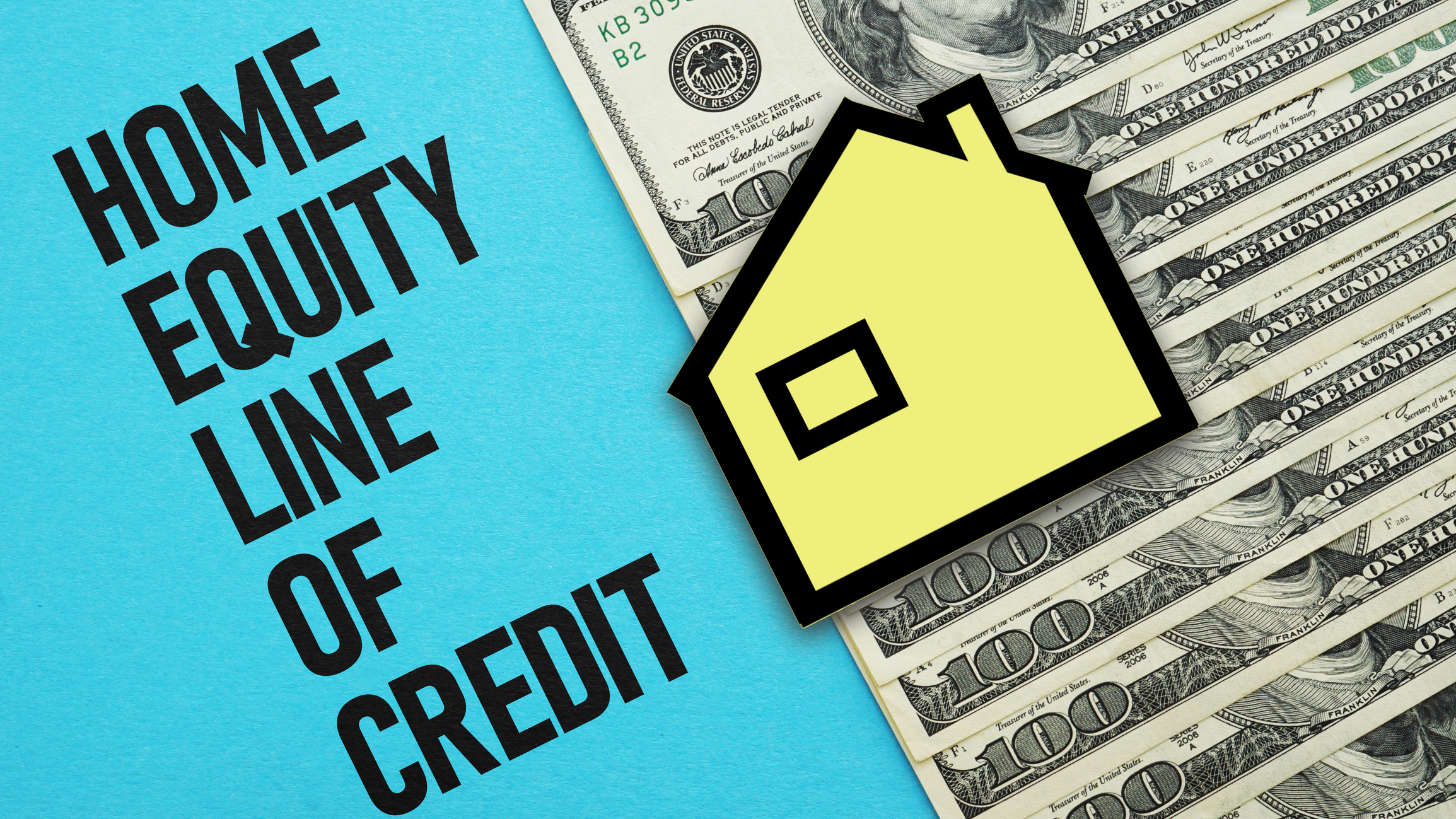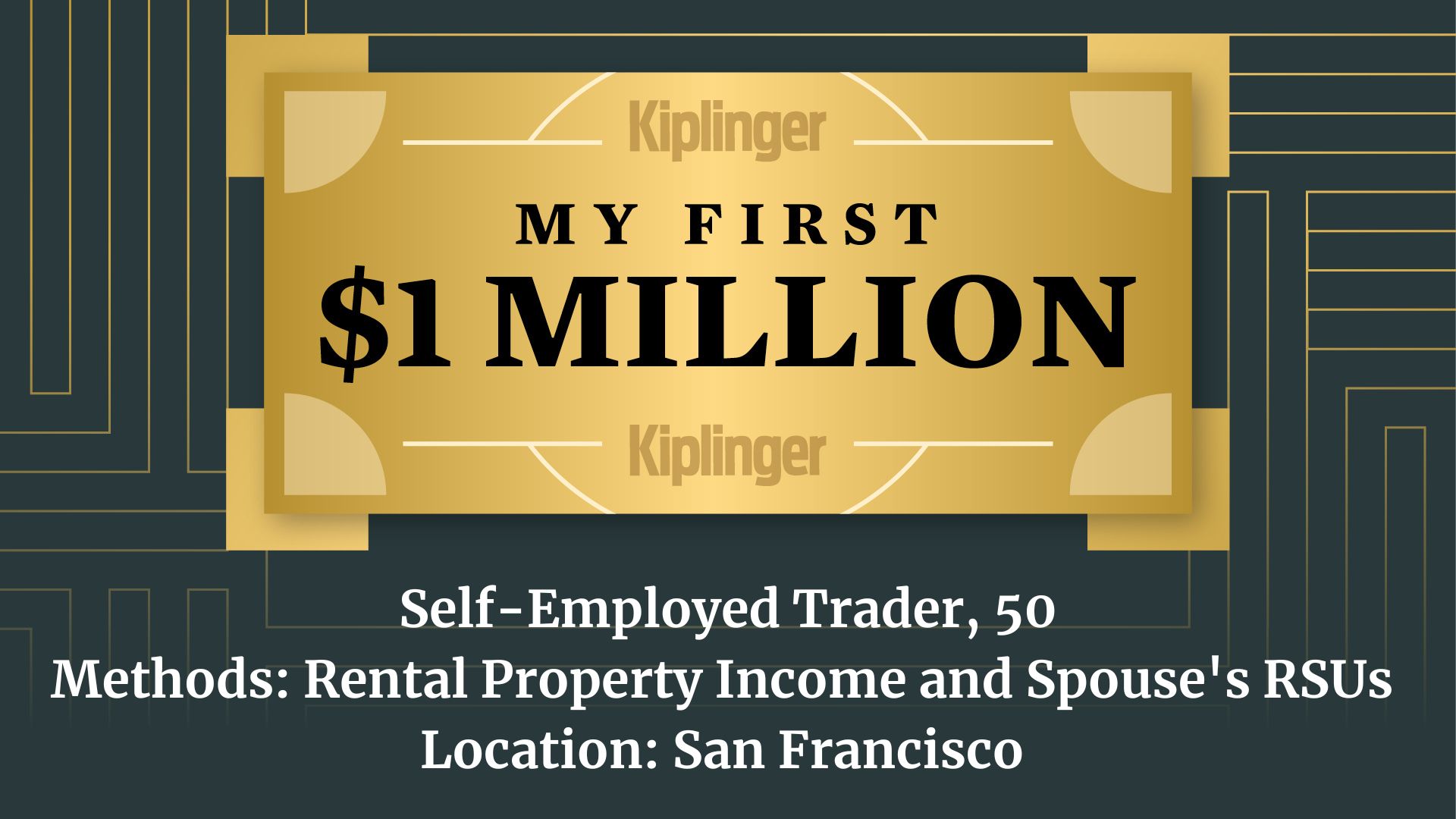How Much Does It Costs to Refinance a Mortgage and Other Questions to Consider
Refinancing a mortgage means replacing your current mortgage with a new one to potentially save you money. But breaking even takes time after upfront costs.

Refinancing a mortgage may be a good move for you if you can lower your current interest rate or shorten your term to save on your monthly payments. But those aren’t the only reasons.
Maybe you need to tap your home’s equity for cash, get out of paying private mortgage insurance (PMI), or change from an adjustable to a fixed-rate mortgage. There are many good reasons to refinance, not to mention several reasons not to.
Some experts predict that mortgage rates may decline in 2025, which could make refinancing more appealing. At its May meeting, the Federal Reserve decided to keep interest rates steady at 4.25% to 4.5% — a level maintained since December 2024. This cautious approach reflects the Fed’s strategy to stabilize the economy amid ongoing economic uncertainty and trade tensions, suggesting that mortgage rates may remain steady for the time being.
From just $107.88 $24.99 for Kiplinger Personal Finance
Become a smarter, better informed investor. Subscribe from just $107.88 $24.99, plus get up to 4 Special Issues

Sign up for Kiplinger’s Free Newsletters
Profit and prosper with the best of expert advice on investing, taxes, retirement, personal finance and more - straight to your e-mail.
Profit and prosper with the best of expert advice - straight to your e-mail.
However, the best time to refinance isn’t just when interest rates drop—it’s when it aligns with your financial goals. Here's a look at how refinancing works and if it's right for you.
How refinancing a mortgage works
Refinancing a mortgage works by replacing your current mortgage loan with a new one, preferably with better terms, a lower interest rate and new (hopefully lower) monthly payments. When you refinance, you usually pay closing costs and fees.
You won’t receive money from the loan unless you’re doing a cash-out refinance. Instead, your lender will use the loan amount to pay off your existing mortgage. After closing, you’ll start making monthly payments on the new loan.
For example, if you refinance your current 30-year mortgage to a 15-year mortgage, the number of years you paid on your original loan doesn't matter because your payments will start over and continue for the next 15 years.
How much does it cost to refinance a mortgage?
The type of refinance loan you choose depends entirely on your current situation, needs and wants. You may want to tap the equity in your property and use it to finance a large expense, or change the interest rate and terms of your existing mortgage to lower your monthly payments.
Whichever type of refinancing you opt for, just make sure the benefits outweigh the costs. Yes, you will likely pay closing costs and lenders' fees on a refinance just as you did with your first home loan.
In fact, refinancing your mortgage can cost between 3% to 6% of the new loan amount, according to the Federal Reserve.
For example, if you still owe $350,000 on your home, expect to pay between $10,500 to $21,000 in refinance fees. But shop around, because these costs can vary by lender.
You’ll want to do some math to determine whether or not it's worth refinancing. It can take a few years for the accumulated monthly savings to exceed the closing costs on your refinance or the break-even mark.
Which type of mortgage refinance is right for you?
Rate and term refinance
Rate and term refinancing, which lets you change the interest rate and terms of your existing mortgage, is considered the most common type of refinancing. Your mortgage balance won’t change, but your monthly payment may drop because of a lower interest rate or longer repayment term.
This type of refinancing can also be used to shorten your repayment term. Your monthly payment may increase, but you’ll pay off your loan faster and spend less in interest over the life of your new loan.
Cash-out refinance
A cash-out refinance lets you tap into the equity in your property. It replaces your existing mortgage with a new, larger loan, giving you access to the difference between the two in real money. The terms of your refinance might differ significantly from your original mortgage loan, including new rates and terms.
Although a cash-out refinance can be a convenient way to access large sums of money to pay for a large expense, home improvements or a remodeling job, it comes with risks. You may pay a higher interest rate than on your existing loan, and if you don’t make payments, you risk losing your home to foreclosure.
Also, not all borrowers qualify. You need a certain amount of home equity — usually 20% or more, which can vary by lender, and you must meet your lender’s credit score and debt-to-income (DTI) ratio requirements.
No closing cost refinance
If refinance rates are low, but scraping together the upfront costs is out of the question, a no-closing cost refinance may be the answer. This is especially true if you plan to stay in your home for only a few years.
However, lenders may recoup their closing costs by raising the mortgage rate, wrapping the fees into the financing or rolling the fees into the total principal balance you’ll owe. Still, you’ll pay no upfront origination fees at closing, which means a shorter break-even point.
FHA refinance
If the Federal Housing Administration (FHA) insured your existing mortgage, you could lower your monthly payments with an FHA streamline refinance. You may even be able to roll your closing costs into the new loan, saving you money upfront, although your lender may charge a higher interest rate to make this happen.
Borrowers often use this type of loan to refinance into a conventional mortgage to suspend mortgage insurance premiums (PMI).
VA refinance
A VA refinance, or interest rate reduction refinance loan (IRRRL), is for homeowners with an existing mortgage backed by the U.S. Department of Veterans Affairs (VA).
This type of refinance can help borrowers lower their monthly mortgage payments by switching from an adjustable-rate to a fixed-rate loan. With this refinance, borrowers are typically required to pay a one-time VA funding fee in addition to closing costs. The VA funding fee for a VA refinance generally ranges from 0.5% to 3.3% of the loan amount.
USDA Assist Refinance
Current USDA borrowers can access low- or no-equity refinancing with streamlined assist refinance loans from the U.S. Department of Agriculture (USDA). However, you will need to go through a USDA-approved lender for your refinance.
This type of program does not typically require credit approval, an appraisal, home inspection or a low debt-to-income ratio to qualify.
Cash-In Refinance
A cash-in refinance is an option for borrowers who want to reduce their monthly mortgage payments, lower interest costs, remove PMI, or inject cash into their homes.
With a cash-in refinance, borrowers put a lump sum payment toward their existing mortgage balance at closing, which reduces the loan-to-value (LTV) ratio and increases the equity in their homes.
This type of refinance can be a good option if you lack equity in your home or are underwater on your mortgage (which means you owe more than the property is worth in the current market).
Short refinance
Missed mortgage payments and foreclosures often come with a higher cost of living. If you find yourself in a tight spot, you may be eligible for a short refinance.
This type of refinance involves replacing your existing mortgage with a lower-balance loan, which can reduce your monthly payments and help you keep your home. Lenders benefit by escaping any short sale or foreclosure costs.
Reverse mortgages
A reverse mortgage isn't the same as refinancing, but they are similar. A reverse mortgage lets older borrowers tap into the equity in their home. However, unlike a standard mortgage where a borrower makes payments to the lender, the lender makes regular payments to the borrower.
It's also possible to refinance a reverse mortgage, ideally with a better interest rate or different monthly payout, and the steps are similar to refinancing a conventional mortgage with a few caveats. You can't refinance a reverse mortgage any earlier than 18 months from when you closed on your original reverse mortgage.
Also, the money that's available to you must be equal to or more than five times the loan closing costs, and the additional cash you get from the refinance must be equal to or more than 5% of the amount being refinanced.
Steps to take to refinance a home
Once you've decided that you want to refinance a home loan, here are the steps you need to take:
- Find the type of refinance that works best for you.
- Next, you’ll want to shop around for a mortgage lender who is willing to accommodate your needs.
- Then, gather all of the necessary documents. Much of this information will be the same as when you applied for your existing mortgage loan, including income, tax returns, assets, debt, credit score, etc. If you're married, your lender may also ask for your spouse’s information.
- After your lender approves your refinance, you may be given the option to lock in your interest rate, which usually lasts between 15 to 60 days — this way, you know the rate you’ll pay before the loan closes. You might also choose to float your rate, which means not locking in the rate before proceeding with the loan and hedging your bets that interest rates will go down.
- Once you submit your refinance application, your lender will begin the process of underwriting where the lender verifies your financial information and looks over all of the details of the property to ensure what has been submitted is accurate.
- The lender typically also orders a home appraisal before you refinance, which will be scheduled. You'll want to put together a list of all of the renovations and updates you've made to your home and tidy up a bit so it looks its best.
- Once the home appraisal and underwriting are complete and everything is in order, it's time to close on your new loan. Before closing, you'll receive a document called a Closing Disclosure, which contains all of the final numbers for your refinance. You have a few days to exercise your right of rescission and cancel your loan if something happens and you need to get out of your refinance before the standard three-day grace period ends.
Does refinancing impact your credit?
Generally, refinancing your mortgage will temporarily lower your credit score and can remain a factor for up to two years. When you shop around for a lender and apply for refinancing, each lender will do a hard credit inquiry, which will reflect on your credit report and your score may drop.
However, you can limit this by applying within a short period of time, usually within a 14- to 45-day window, depending on the scoring model.
Refinancing a home loan can also result in the closing of the account of your existing home loan, which is also reflected on your credit report. But, the impact on your credit score can vary and is based on the size and age of the account. Over time, the impact of a refinance on your credit score will generally lessen as your other credit accounts age.
Should you refinance a home loan?
There are several things to consider before refinancing. Doing so can change the conditions of your mortgage and help you secure a lower interest rate and new repayment term.
Refinancing can also lower your monthly payment, allow you to consolidate debt or provide the option to take some cash out of your home’s equity to pay for renovations.
But, there are times when refinancing is not recommended.
One drawback of refinancing is that it comes with closing costs. Also, if you’re at least halfway through paying off your existing loan, it's unlikely you'll save money refinancing. That's because refinancing with a new loan restarts the clock all over again, meaning you may pay more in interest over time.
Pros and cons of refinancing
Patrick Boyaggi, Co-Founder & CEO of Own Up says, “Refinancing in today's market may not make sense for most homeowners because current market rates are significantly higher than the rates most homeowners secured during the pandemic's low-rate environment.”
While the Federal Reserve recently decided to keep interest rates steady, mortgage rates are still higher than those secured during the pandemic's low-rate environment.
However, some homeowners are still choosing to refinance to tap into the equity they've built, using the funds for home renovations or to consolidate higher-interest debt. Whether refinancing is the right move depends on your financial situation and goals.
There are many positive reasons to refinance, but there are also a few drawbacks to consider.
PROS | CONS |
|---|---|
Potential to pay off your loan faster | High closing costs and possible lender fees |
Lower your interest rate and monthly payment | Possible negative impact on your credit score |
Get rid of private mortgage insurance | Possible longer loan term or more debt |
Change the terms of your loan | Possible restrictions on how soon you can refinance |
Add or remove a co-borrower or cosigner | Row 4 - Cell 1 |
Tap into your home’s equity | Row 5 - Cell 1 |
Chance to switch from an adjustable rate mortgage to a fixed rate mortgage | Row 6 - Cell 1 |
Related Content
Profit and prosper with the best of Kiplinger's advice on investing, taxes, retirement, personal finance and much more. Delivered daily. Enter your email in the box and click Sign Me Up.

For the past 18+ years, Kathryn has highlighted the humanity in personal finance by shaping stories that identify the opportunities and obstacles in managing a person's finances. All the same, she’ll jump on other equally important topics if needed. Kathryn graduated with a degree in Journalism and lives in Duluth, Minnesota. She joined Kiplinger in 2023 as a contributor.
-
 5 Gifts the IRS Won’t Tax: Even If They’re Big
5 Gifts the IRS Won’t Tax: Even If They’re BigGift Tax Several categories of gifts don’t count toward annual gift tax limits. Here's what you need to know.
-
 The 'Scrooge' Strategy: How to Turn Your Old Junk Into a Tax Deduction
The 'Scrooge' Strategy: How to Turn Your Old Junk Into a Tax DeductionTax Deductions We break down the IRS rules for non-cash charitable contributions. Plus, here's a handy checklist before you donate to charity this year.
-
 IRS Says You Made a Tax Return Mistake? A New Law Could Help You Fight Back
IRS Says You Made a Tax Return Mistake? A New Law Could Help You Fight BackTax Law Updated taxpayer protections change what the IRS must explain on error notices and how long you have to respond.
-
 The Top 22 Gifts for Grandkids from Walmart in 2025
The Top 22 Gifts for Grandkids from Walmart in 2025From PlayStation to Labubu, you'll find the hottest gifts of 2025 for your grandkids at Walmart this year. Some of them are up to 78% off.
-
 CD vs. Money Market: Where to Put Your Year-End Bonus Now
CD vs. Money Market: Where to Put Your Year-End Bonus NowFalling interest rates have savers wondering where to park cash. Here's how much $10,000 earns in today's best CDs versus leading money market accounts.
-
 Meet the World's Unluckiest — Not to Mention Entitled — Porch Pirate
Meet the World's Unluckiest — Not to Mention Entitled — Porch PirateThis teen swiped a booby-trapped package that showered him with glitter, and then he hurt his wrist while fleeing. This is why no lawyer will represent him.
-
 Smart Business: How Community Engagement Can Help Fuel Growth
Smart Business: How Community Engagement Can Help Fuel GrowthAs a financial professional, you can strengthen your brand while making a difference in your community. See how these pros turned community spirit into growth.
-
 Smart Money Moves Savers Should Make in 2026
Smart Money Moves Savers Should Make in 2026These steps will get you on the road to achieving your 2026 savings goals.
-
 How Much Would a $50,000 HELOC Cost Per Month?
How Much Would a $50,000 HELOC Cost Per Month?Thinking about tapping your home’s equity? Here’s what a $50,000 HELOC might cost you each month based on current rates.
-
 My First $1 Million: Self-Employed Trader, 50, San Francisco
My First $1 Million: Self-Employed Trader, 50, San FranciscoEver wonder how someone who's made a million dollars or more did it? Kiplinger's My First $1 Million series uncovers the answers.
-
 Waiting for Retirement to Give to Charity? Here Are 3 Reasons to Do It Now, From a Financial Planner
Waiting for Retirement to Give to Charity? Here Are 3 Reasons to Do It Now, From a Financial PlannerYou could wait until retirement, but making charitable giving part of your financial plan now could be far more beneficial for you and the causes you support.